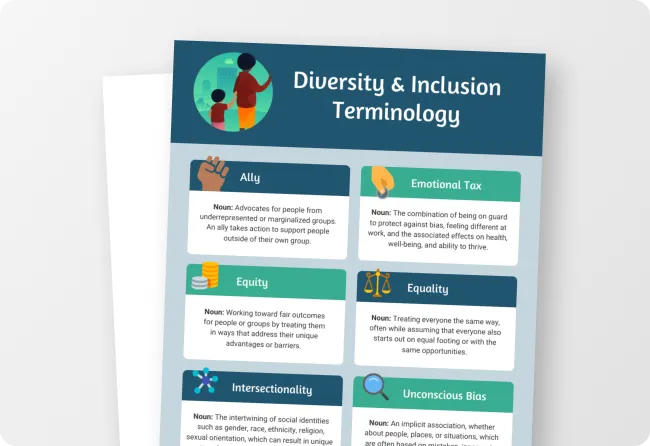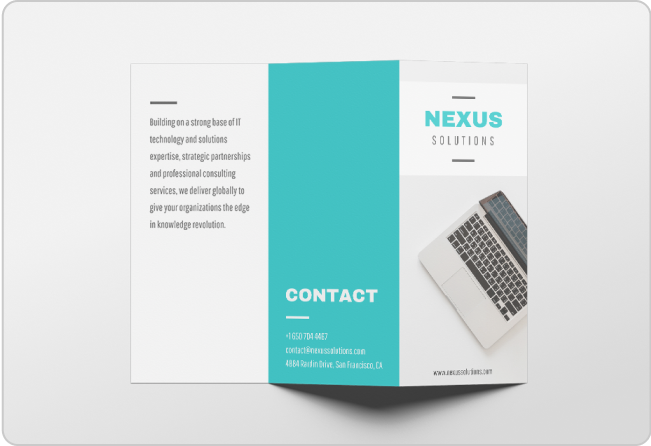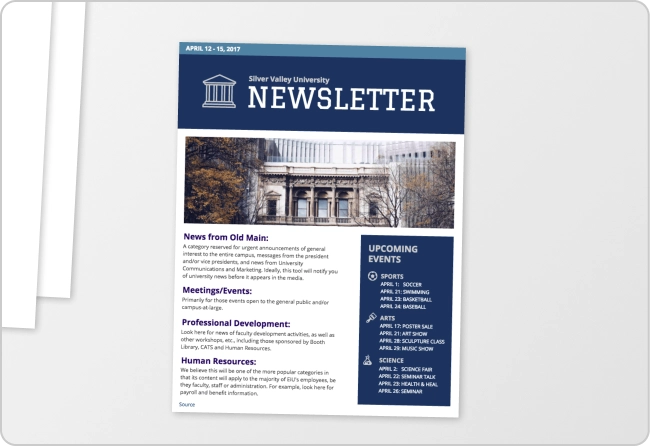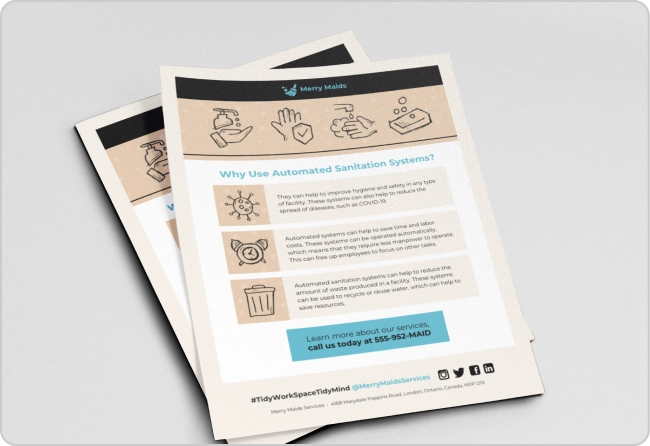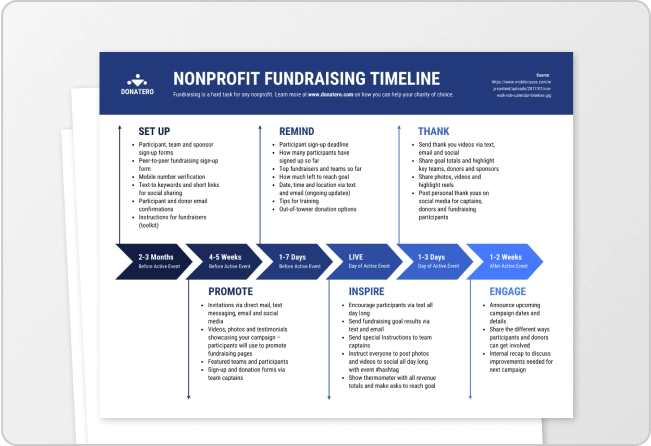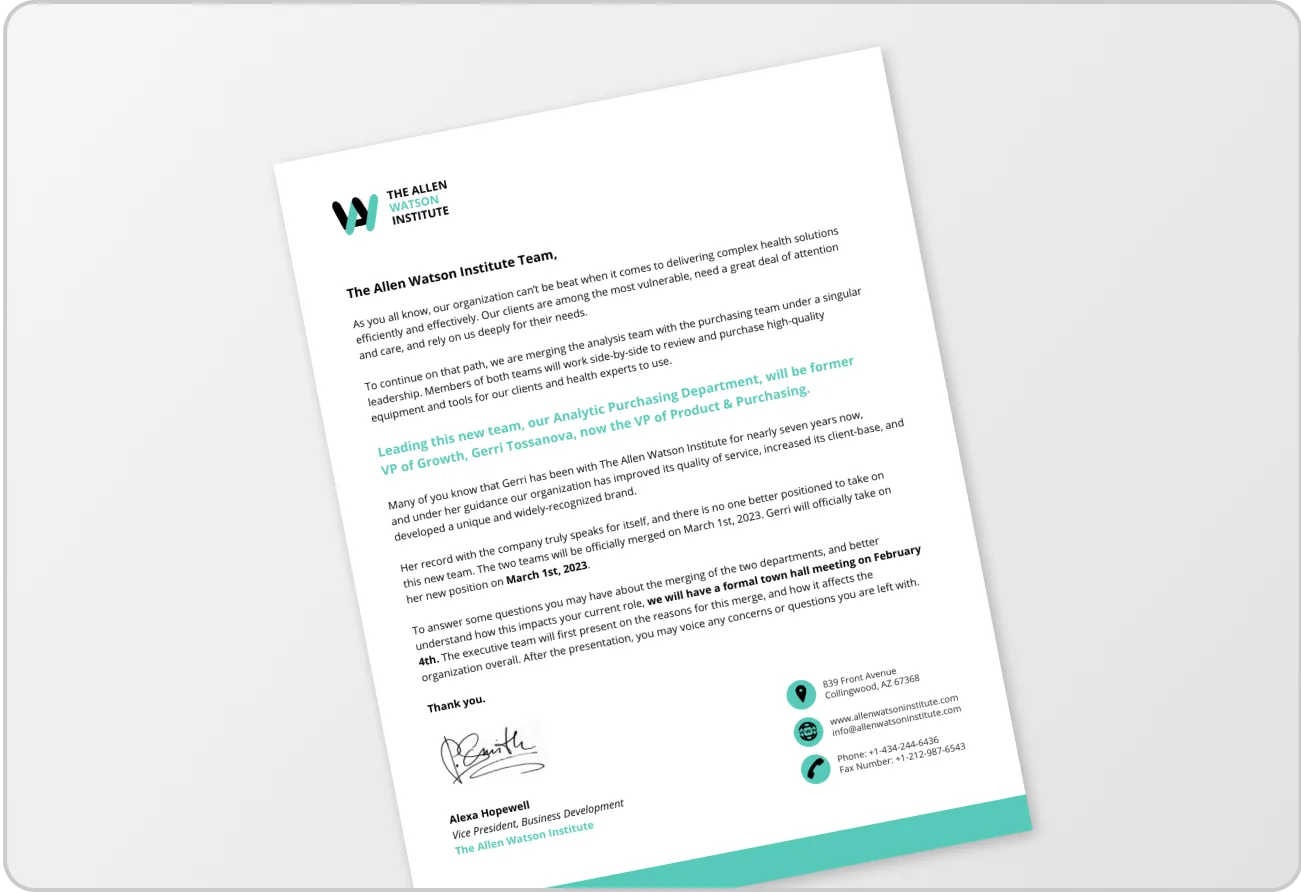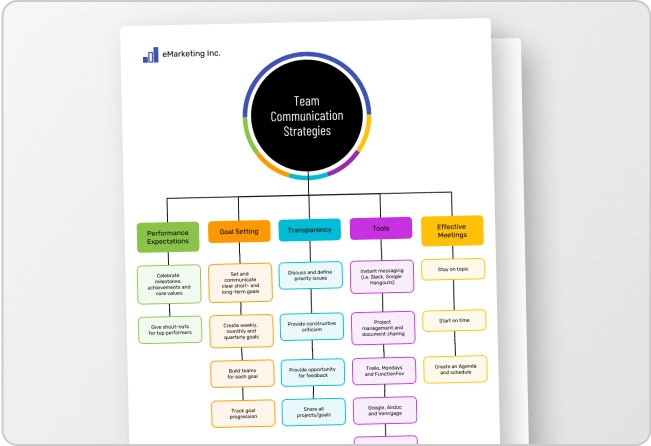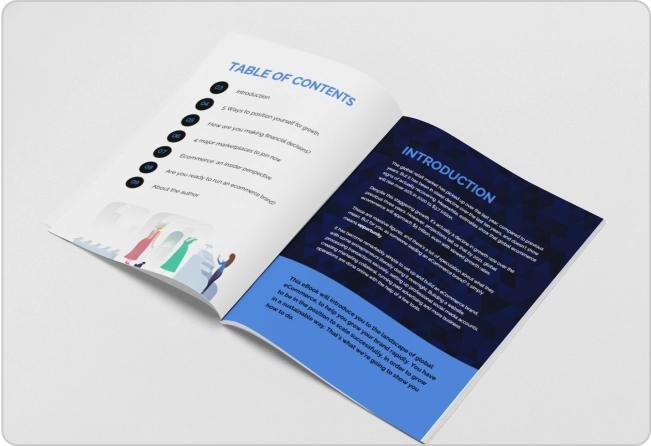
Nowadays, everyone is bowing down in front of AI’s might.
But most people are overlooking the real heroes behind the curtain — the prompts.
That hilarious subject line from your competitor’s email? That jaw-dropping image that you saw yesterday on LinkedIn? And the enviable videos that some brands are creating at the speed of light?
Yep, some smart marketer most likely conjured them up with brilliant AI prompts.
If you know what to ask, AI becomes your creative genie. If you don’t, you’ll add to the AI slop that’s already polluting the Internet.
This blog is your one-stop guide to summon the genie. I’ve curated 80 specific, actionable and customizable prompts that will help you move faster, create better and make the most of your AI tools.
Understanding AI prompts in marketing
Let’s understand by answering the fundamentals — What are AI prompts?
AI prompts are input commands you give to AI tools to generate specific outputs such as content, ideas or answers to your queries.
Think of them as creative briefs, but written for the machines. A prompt can be a generic question like “Write a subject line for a product launch email,” or a detailed brief with tone, format and target audience included. Like this one:
Write a subject line for an email newsletter sent by the marketing team at CTRL Z, a Houston-based eCommerce brand known for quirky lifestyle accessories popular with Gen Z. The email announces the launch of its latest product — a glow-in-the-dark phone case that changes color with temperature. The goal is to drive waitlist sign-ups ahead of the official drop. Use a friendly, conversational tone with a hint of FOMO. Keep it under 10 words.AI prompts are the difference between asking for a horse and getting a Unicorn — versus wishing for a pony and ending up with a donkey.
The better your prompts, the better the output.
In marketing, prompts can make a world of difference in shaping every word, pixel or click behavior.
Benefits of using AI prompts
A well-thought-out AI prompt is a creative multiplier. It can help you speed up your processes and be 50x more productive — and yet retain your personal touch.
And in a space where your competitors are learning to spell the right commands, generic prompts don’t stand a chance.
Here are some benefits of using AI prompts to improve your marketing output:
1. Gets things done faster
AI can take over repetitive tasks like writing blog openings or summarizing lengthy reports into skimmable bullet points.
Instead of wasting time designing the perfect pitch deck or formatting bullet points, AI frees up your time to focus on more important priorities like strategizing your marketing efforts.
2. Helps you be more creative
Well-structured prompts often help you get your creative juices flowing, unlock your “writer’s block,” and think through new angles to work on a marketing campaign.
For example, I have a go-to prompt that gives me 25 blog headline ideas every time I’m done working on a draft. And honestly, the results still surprise me every time. I’ll share the exact prompt in just a bit.
3. Lets you personalize content at scale
“Personalization” and “scale” used to be oxymorons, until AI entered the picture. Back then, personalizing your brand messaging for different email segments and target groups meant obsessing over nuanced details like choice of words, tone and call-to-action (CTA).
Now, you can just have one AI prompt to tailor your messaging for different personas or audience segments across multiple channels. All of that, without compromising on tone or consistency.
4. Generates consistent, on-brand outputs
Maintaining brand consistency across the board can be a challenge — especially if your team’s growing fast.
But if you have a common library of AI prompts for the entire team, you don’t have to worry about your marketing efforts sounding like they came from multiple people.
Just feed AI the right instructions and get the output that sounds like your brand every time — even if it’s a new intern writing it.
5. Improves your SEO and competitor research
As a non-technical SEO person, this is one of my favorite things about AI.
Prompts help me generate keyword-rich outlines, meta descriptions and SEO titles or even suggest specific FAQs based on real search queries.
6. Helps you A/B test your ideas
Marketers are natural perfectionists and overthinkers. We like to self-censor our ideas a dozen times before settling for the best idea.
AI complements this without compromising your productive time. One good A/B testing prompt can give you as many options as you want to test at record time.
7. Make repurposing ideas easy
Marketing without distribution is like throwing a party and not sending invites to anyone. It’s as good as non-existent.
And it used to be a big problem until AI came to the fore. Now, you can have a prompt that lets you turn a blog post into a LinkedIn carousel, a thread on X.com or an email sequence.
And you can do it over and again without sounding stale.
8. Lets you save cost
Yeah, AI isn’t taking away your job. But it’s already changing how businesses hire.
Today, most brands want marketers who know how to workwith AI because it saves them money. One AI-savvy marketer can do the job of 10 people at the same cost.
Personally, I think we are witnessing the “iPhone moment” all over again. It’s when one revolutionary phone replaced standalone devices like a phone, camera, radio, calculator, MP3 player, watch, GPS and books.
Types of AI prompts for marketing
AI can deliver amazing results, but only if you know what to ask and how to do it.
In this section, I’ll walk you through the types of AI prompts, categorized by use cases, that we use at Venngage for a variety of marketing-specific tasks.
These prompts are easy to tailor for your specific needs, help you get better results and speed up your entire workflow.
Use case: Strategy and planning
SEO-related prompts
1. Identify [10] long-tail keywords with low competition and high intent for the topic “[topic]”. Prioritize keywords relevant to [target audience] in [industry]. Also add other SEO metrics like KD and search volume. Have the data ready to be downloaded as a CSV file in a spreadsheet.You can validate these keywords further using an SEO platform like Ahrefs.
2. Analyze this page: [insert URL] for on-page SEO. Focus on headings (H1–H3), meta tags, internal/external links, image alt text and keyword use. Flag weak or missing elements. Then compare it with the top 3 ranking pages for “[primary keyword]” (add URLs) to assess content depth, structure and engagement. Suggest clear improvements to help it outrank them.This prompt is perfect for simplifying your SEO analysis. It helps you automate data gathering and highlights keyword or content structure gaps that impact rankings.
3. Generate a schema markup for the blog titled “[blog title]” targeting “[primary keyword]”, including Article, BreadcrumbList, FAQPage (if relevant) and structured data for title, author, date and meta info to boost SEO.I’m not an SEO expert, but this prompt — borrowed from our in-house team — makes creating schema markups effortless and ensures your content is structured for better SERP visibility.
4. Create a topic cluster around the keyword “[pillar topic]”. Include [5–7] supporting blog titles with target search intent.Keyword or competitor research prompts
5. Find trending keywords related to “[topic or product]” that have shown significant growth in search volume over the last [3 months] in [region/country]. Also suggest which ones have low competition and could be quick wins.”I use this prompt to plan seasonal or trend-driven campaigns. It’s especially useful for B2C and eCommerce marketers who want to tap into buyer intent before the competition does.
6. What are some informational vs transactional keywords related to “[core keyword]” for a [B2B/B2C] audience? Include examples of search intent and map each to a potential blog or landing page idea.We use this prompt to improve our content mapping at Venngage. For instance, you can use it to plan blog posts for TOFU/MOFU and BOFU-specific landing pages. It’s super helpful when you need to align your content assets with the buyer journey.
7. Create a keyword list targeting [customer persona] who is actively looking for [solution or benefit]. Include monthly search volume, keyword difficulty and the most relevant SERP features (like featured snippets, videos, etc).Use this one to get hyper-specific suggestions about who you’re trying to reach and what they’re searching for in Google. It’s helpful when building targeted blog clusters or refining ad copy keywords.
8. Generate keyword ideas around “[seed keyword]” and organize them into top-of-funnel, middle-of-funnel and bottom-of-funnel intent buckets. Include example content formats (e.g., blog post, comparison page, use case page) for each.I love using this prompt during content audits or when refreshing a topic cluster. It helps me identify gaps across the funnel and build a more balanced SEO strategy.
Blog outline prompts
9. Create a detailed blog outline for the topic ‘[topic]’ targeting [audience type]. Use a [tone style, e.g., witty/professional] voice and make sure the structure follows a logical flow with an engaging intro, clear H2s and a CTA at the end.Sometimes, I add more color to the prompt asking ChatGPT to think of itself as a freelance journalist pitching an article idea to The New York Times. Just adding that small detail makes a world of difference in the kind of outline quality it generates.
10. Outline a blog post titled ‘[blog title]’ optimized for the keyword ‘[primary keyword]’. Structure it using the AIDA framework (Attention, Interest, Desire, Action) and include relevant examples or stats where appropriate.Perfect for BOFU or conversion-focused content pieces. I use this when I need an outline to drive action while still offering value. Ask AI to suggest places for internal links too.
11. Generate a blog outline for a [comparison post/product review/listicle] targeting [industry or niche] readers. Include sections that highlight pros and cons, use cases, pricing and final recommendations.This is ideal for guest posts or outsourced blogs. Freelancers often produce more objective, well-researched comparison pieces than in-house marketers, who may be biased toward their own products.
12. Create a blog outline for ‘[topic]’ that starts with a hook to grab attention, breaks into 3 key sections with actionable takeaways, adds a relevant mini case study and wraps with a persuasive CTA.I love this prompt for generating outlines for blogs that need a narrative arc. Adding the case study prompt makes it more relatable and gives the content extra credibility.
You can reuse this prompt for a thought leadership blog outline, too. Just take away the mention of the case study and CTA and replace it with a clear takeaway that aligns with your brand philosophy.
Use case: Content creation
Blog headline prompts
13. Generate [10] SEO-friendly blog titles for a post targeting the keyword “[primary keyword]”. Prioritize clarity, search intent and emotional pull. Include a mix of listicles, how-tos and question-style formats.Use this when you need headline variations to test on social or pick the strongest one for SEO. It’s especially handy when the keyword is broad and can be framed in different ways to suit TOFU or BOFU needs.
14. Write [5–7] headline options for this blog post idea: “[topic]”. Make each one fit a different tone — e.g., playful, professional, curiosity-driven or urgency-based. Include the focus SEO keyword “[keyword]” in each title.Perfect for testing headline variations across channels. This prompt helps you tailor your messaging for search, newsletters and social media without reusing the same copy.
15. Improve this blog headline: “[current title]”. Make it more compelling for clicks while keeping the core keyword intact. Provide 3 stronger variations with a short note on why each might perform better.Great for refreshing underperforming posts — use it to rewrite stale headlines without changing the blog URL or to adjust casing to match your style guide.
16. Brainstorm [5] blog titles targeting [buyer persona] who’s struggling with “[pain point]”. Each title should promise a benefit or outcome and include power words.This is my go-to for crafting captivating blog titles that the desired blog readers can relate to. I use it mostly when working on problem-solution content pieces that offer specific results and require higher CTRs.
Content rephrasing prompts
17. Rewrite this paragraph in a more [tone: e.g., conversational/professional/witty] style while preserving the original meaning: “[paste paragraph].I use this prompt to tighten clunky sentences when I’m overthinking my writing. Just don’t let it rewrite large sections — it tends to strip away your personal tone.
18. Turn these [3] bullet points into a paragraph that reads smoothly and naturally. Add transitions and make the tone sound natural and engaging.Perfect for turning messy notes into clean copy — or vice versa. I use it to shape blog content from meeting minutes or break down long text into bullet points.
19. Summarize this blog post into a 100-word TL; DR. Keep it skimmable and highlight [2] key takeawaysSuper handy for when you need a succinct intro, ELI5 (Explain Like I’m Five) types of content or blurbs for social media posts. I mostly use this to save time when promoting blog posts on LinkedIn.
20. Convert this blog section into a script for a [60]-second video to post on [LinkedIn]. Keep it punchy and camera-ready.This is useful when you need to turn a written content piece into short-form videos. You can tweak the prompt to repurpose a blog into carousel content, email copy or Twitter thread too.
Image generation prompts
21. Create a flat-style illustration of “[concept]” to go with a blog post about “[topic]”. Keep the color palette minimal and use a white background.Want blog thumbnails or featured images quickly? Use this prompt when you want something simple and generic, but not something that’s necessarily aligned to your brand style.
22. Design a simple infographic summarizing these [3] data points: [insert points]. Include icons and bold numbers. Use a clean, modern style.Great for turning stats into sharable visual content. I’ve used this prompt to make simple infographics for LinkedIn or presentations.
For best results, I use Venngage’s AI Infographic Generator. It’s better than most AI tools I’ve used for infographics and lets me customize the output, which is great.
I turn to this when I want visuals that stand out — especially for POV-powered thought leadership posts. This is like moodboarding with AI.
24. Mock up a [LinkedIn] carousel with 5 slides explaining “[concept or process]”. Use bold headlines, clean typography and high-contrast colors.Until last year, I used to spend at least 30 minutes every week trying to come up with the right copy for creating a LinkedIn carousel. Now, I just use this prompt when I want to turn a blog into an engaging LinkedIn post. Also works for Instagram and Facebook if you use the right words.
For design, I pair this prompt with Venngage’s social media carousel templates to get a solid head start.
Video and multimedia prompts
25. Write a script for a [90]-second explainer video about “[product or feature]” targeting [persona]. Keep it friendly and benefit-driven. Include a CTA at the end.I lifted this prompt from a marketer I follow on LinkedIn. Basically, you can use this to generate video scripts faster — especially if you’re not a video expert. Just be sure to be specific about the product or feature, define your buyer persona and clarify your brand’s tone.
26. Generate ideas for a [product teaser] video targeting [audience]. Aim for scroll-stopping hooks and keep each caption under 15 words.This is a great prompt for Insta Reels, TikToks or YouTube Shorts. We have tested this prompt for generating dozens of captions at Venngage and it’s been working great!
27. Storyboard a [3]-step [tutorial] video on how to [task or use case]. Include [visual directions] and [on-screen text suggestions].Use this when you’re planning video content that you plan to process via post-production. This prompt is just to help you visualize the flow before filming a marketing video.
LinkedIn prompts
These prompts help you write better posts that build your brand, grow your following and start real conversations.
28. Write a [LinkedIn] post sharing a personal lesson learned from [specific project/situation]. Keep the tone authentic and aim for a clear takeaway.I have a rich library of prompts to create LinkedIn post ideas and content. But I keep coming back to this when I want to post something thoughtful but don’t want to sound preachy.
29. Create a [LinkedIn] post summarizing this blog post: “[link or title]”. Make it skimmable, add [1] strong relevant opinion and end with a subtle CTA.Great for promoting a blog on social media, but in a way that makes it look valuable to the readers. It works best when you want to schedule posts in bulk, but without sounding robotic.
30. Write a [3]-line LinkedIn hook to grab attention on a post about “[topic]”. Make it curiosity-driven but not clickbaity.Sometimes, I just need a scroll-stopping first line. And this prompt always helps me break out of writer’s block. Even if I don’t use the hook that this prompt generates, it generally sparks an idea that I can actually get behind.
Use case: Campaign-specific prompts
Subject line prompts
31. Write [5] email subject lines for a campaign about “[offer or event]”. Keep them under [60] characters and A/B-test worthy.We use this for our marketing newsletters or email sequences when we need quick subject line variations. For best results, ask it to vary the tone (e.g., urgent vs. friendly) so that you can choose the best one that suits the email copy.
32. Write [3] curiosity-driven subject lines for an email teasing “[topic or benefit]”. Avoid clickbait, but keep the reader intrigued.This is useful when you want to improve open rates without giving everything away. Works great for product updates, content roundups or thought leadership emails to pique readers’ curiosity.
33. Suggest [10] subject lines for a re-engagement email targeting inactive subscribers. Include one that uses a question and one that highlights a limited-time offer.If you have an eCommerce brand that has a problem with cart abandonments, try this prompt to reconvert cold leads back.
34. Create [5] subject lines that highlight a strong benefit for “[target audience]” in [industry]. Keep them value-focused and action-oriented.Very effective for writing sales and nurture emails. I tweak the prompt to reflect the exact job title or specific challenges to make it feel personalized for the recipients.
Email marketing prompts
35. Write a [3]-paragraph email promoting [product/event/content] to [persona]. Start with a hook, then focus on benefits and end with a clear CTA.We use this prompt for email blasts and lead nurture sequences. It saves us time while still giving us plenty of room to customize.
36. Write a follow-up email for leads who downloaded “[lead magnet]” but didn’t convert. Highlight how the offer solves [specific pain point] and include a CTA to [desired action].I like to use this prompt to fill gaps in an email campaign. It nudges warm leads who show interest but need a little push to take the next step.
37. Create a re-engagement email targeting subscribers who haven’t opened the last [3] emails. Use a friendly tone, include a quick poll or resource and ask if they’d still like to hear from us.We’ve used this prompt for quarterly list hygiene campaigns. It helps us reconnect without sounding spammy. It’s also a great way to get timely feedback from your email subscribers.
38. Generate a win-back email for churned users of [product/service]. Acknowledge why they might’ve left, offer a compelling reason to return (like a new feature or discount) and include a CTA.This one’s made for retention campaigns. Tweak it to reflect user segments — like SMBs vs. enterprises — and it might help you recover lapsed users who just needed a better reason to come back.
Social media marketing prompts
39. Create a tweet thread (5–7 tweets) breaking down this blog post: “[topic]”. Keep it engaging and include [1] stat and [1] quote.This is a great prompt for turning evergreen blogs into skimmable content for X.com. You can even repurpose the thread into LinkedIn carousels.
40. Write a LinkedIn post summarizing the key takeaways from “[webinar or report title]”. Use a bold hook and bullet points for clarity and end with a question to spark comments.I use this prompt to turn long-form content into engaging LinkedIn posts. It’s perfect for thought leadership or demand gen — especially when paired with a compelling visual or stat.
41. Generate [3] Instagram captions for a post about “[event, product or trend]”. Each one should use a different tone (funny, educational, inspirational) and include relevant hashtags.Great for testing voice and vibe across posts. I usually pick the best-performing tone and reuse it for future content — especially for campaigns targeting younger or niche audiences.
CTA button/copy prompts
42. Generate [5] CTA button texts for a landing page about “[offer]”. Mix urgency, value and action words.Generic CTAs like “Learn More” don’t get as many clicks. I use this prompt to come up with a short but descriptive CTA button copy that feels more conversational and conversion-ready.
43. Write [3] CTA button options for a free trial page targeting [persona]. Include one version that emphasizes risk-free value and another that highlights instant access.When optimizing product pages, use this to find CTA copy that removes hesitation. It’s especially useful for SaaS or freemium models where “Try it free” isn’t always enough.
44. Generate [10] CTA button copy variations for a lead magnet offering “[resource]” (e.g., an ebook or checklist). Include one playful, one benefit-driven and one curiosity-based version.Perfect for running A/B tests on gated content. This prompt helps you experiment with the tone while still keeping the CTA specific to the offer’s value.
45. Suggest [5] high-converting CTA button texts for a webinar sign-up page. The CTAs should build excitement and hint at what attendees will learn or gain.We often use this when promoting virtual events. CTAs like “Reserve Your Spot” or “Unlock Expert Insights” tend to perform better than plain “Register Now.”
Ad copy prompts
46. Write [3] Google Search ad variations for this product: “[product]”. Include one headline focused on benefits, one on features and one with a sense of urgency.This one is great for paid search analytics when testing campaign ad messaging. You can use it to generate multiple headline-description combos quickly.
47. Generate [5] Facebook ad copy variations targeting [persona] for this [offer]. Include a hook, a value prop and a CTA.Use this to test different messages across awareness or retargeting campaigns. Add emojis or specific tone guidance if needed.
48. Create [3] headline options for a banner ad promoting “[offer]”. Keep it under [8] words and make it attention-grabbing.Great for display ads or remarketing banners. I ask AI to vary tone between clever, direct and emotional.
49. Write a [2]-line Instagram ad caption for “[product or event]”. Use persuasive copy and a strong CTA.This works well for mobile-specific campaigns. I like to pair this prompt with a matching image prompt to complete the creative.
Marketing calendar planning prompts
50. Build a monthly content calendar with [4] blog posts, [4] social posts and [2] email topics related to “[theme or campaign]”.Use this to kickstart quarterly planning. Add timelines, owners or channel-specific ideas for more structure.
51. Create a launch calendar for [product/event] including pre-launch, launch and post-launch activities. Add content ideas for each phase.I use this when planning GTM strategies or coordinating multi-channel rollouts.
52. Generate a 3-month social media content calendar for [platform] focused on [theme or audience]. Include post types and frequency.Helpful for mapping out content clusters or engagement pushes. Can be adapted for different teams or clients.
53. Suggest a weekly marketing task checklist for a solo marketer working on [project or business type].Very handy for freelancers or one-person marketing teams who want to manage their time without overwhelm.
Proofreading prompts
54. Proofread this marketing email for grammar, flow and clarity: “[paste email]”. Keep the tone [tone] and make it concise.Great when I want a second pair of eyes on a last-minute copy.
55. Rewrite this blog intro to sound more engaging and aligned with [audience or brand voice].Useful for polishing drafts that feel too stiff or generic.
56. Review this landing page copy for clarity, consistency and conversion-friendliness.Good for spotting jargon or overly long sentences that might affect signups.
57. Suggest improvements to this CTA section: “[paste section]”. Focus on tone, urgency and readability.A quick win when I want to optimize the microcopy without rewriting everything.
Creative brief prompts
58. Write a creative brief for a [campaign type] targeting [audience] to promote “[offer or product]”. Include objectives, key messages and deliverables.Great for aligning teams before production begins.
59. Turn this brainstormed idea into a structured creative brief: “[idea]”. Include a timeline and success metrics.Useful for documenting ideas after a kickoff call.
60. Generate a client-ready creative brief template for [agency/service type]. Make it easy to customize.Use this to onboard new customers or to standardize your creative briefing.
61. Rewrite this brief to sound clearer and more goal-oriented: “[paste brief]”. Keep it under [300] words.Perfect for trimming down long-winded internal docs.
PR related prompts
62. Write a press release for the launch of “[product or initiative]”. Keep it under [400] words and follow the standard PR format.Great for distribution via PRWire or blogs.
63. Create a media pitch email for this story idea: “[topic]”. Make it concise, compelling and personalized for journalists.I have used this a few times for proactive PR outreach to niche publications.
64. Summarize this company update as a PR blurb for internal newsletters or LinkedIn: “[insert update]”.This is a quick way to spin everyday updates into shareable news.
65. Suggest a list of media outlets and journalists that might be interested in this story: “[insert story or angle]”.Great for building a media list without hours of research.
Link exchange email prompts
66. Write a cold outreach email proposing a link exchange with [website]. Make it casual and value-driven.This one is great for SEO link-building without sounding spammy.
67. Generate a follow-up email for a link-building proposal sent [x] days ago. Keep it polite and conversational.Useful when you haven’t heard back but don’t want to burn the bridge.
68. Write a link exchange email that highlights this blog post: “[title or URL]”. Mention how it adds value to their content.I use this when doing manual outreach to related sites.
69. Create a short LinkedIn message template for link-building outreach to content managers.Helpful when doing non-email cold outreach.
Analytics and tracking-related prompts
70. Generate a list of GA4 events I should track for a [landing page/eCommerce site/SaaS signup flow].Perfect for planning measurements before launch.
71. Write the UTM parameters for this campaign: “[campaign name + source + medium]”.We use this to standardize tracking across teams.
72. Suggest 3 key KPIs I should monitor for this funnel: “[describe funnel]”.Helpful for building reports that actually tie to business goals.
73. Create a tracking plan for this product launch including tools like GA4, Hotjar and HubSpot.Great for documenting what gets measured, by whom and where.
Table creation prompts
74. Create a custom HTML/CSS snippet for a [3×6] table comparing [feature set or data type].Use this to embed comparison charts in your blogs without slowing down page load times or relying on table plugins.
75. Turn this paragraph into a clean table with 2 columns: one for [features] and one for [descriptions].We often use this to improve scannability in long-form content or when summarizing tool capabilities.
76. Generate HTML code for a responsive table that includes zebra striping and column sorting. Populate it with sample content about [topic].Ideal for content-heavy posts or tools pages where interactive comparison is valuable.
77. Create a markdown-style table comparing these three products: [Product A], [Product B] and [Product C]. Include rows for price, features and user rating.Handy when drafting structured content in Google Docs or Notion before moving to the CMS.
Critical assessment prompts
78. Critically analyze this article for logical fallacies, contradictions or unsupported claims: “[paste content]”.Great for refining thought leadership pieces or ensuring your content holds up under scrutiny.
79. Review this blog post and highlight areas where the argument is weak, repetitive or lacks clarity. Suggest improvements where possible.I use this before final edits to improve flow and persuasive strength, especially for long-form content.
80. Evaluate this piece for bias, tone mismatch or overuse of jargon. Suggest changes that would make it more objective and accessible.Perfect for pieces intended for a general audience or external stakeholders like the press or investors.
Bonus prompts
Ask your AI tool to create a detailed prompt for a specific marketing use case or improve an existing prompt for best results.
Prompt generation
81. Create a detailed prompt that helps me generate persuasive landing page copy for a product targeting B2B marketers.Use this when you’re not sure how to ask the AI the right way. It helps break down complex goals into structured instructions so you get more relevant output the first time.
82. Write a prompt that helps turn this webinar transcript into 5 social posts, a blog recap and 2 email teasers.Great when you’re trying to extract more value from existing content but don’t want to manually write different prompts for each format.
Prompt improvement
83. Improve this AI prompt to make it more specific and results-oriented: “[insert existing prompt]”. Focus on clarity, structure and output quality.We use this when the AI response feels generic or off-target. A better-crafted prompt often saves time and reduces the number of rewrites needed.
84. Review this prompt and suggest changes to make it suitable for a technical [B2C] audience. Keep the tone casual and the instructions detailed.This is useful when switching audiences or verticals — especially when working on niche content or high-consideration products.
How to craft effective AI prompts
No matter if you use ChatGPT, Claude or Gemini — the AI tool you use is only as smart as the prompt you feed it.
If your prompt is sloppy, its output will be too. And if it’s specific and well-thought-out, expect AI to surprise you with its response.
Prompt writing is a creative skill. Here are a few things to keep in mind if you are crafting original AI prompts from scratch:
Be specific and clear
Yeah, even AI can’t stand fluff. Under the hood, every AI interface is a machine that thinks in binary systems. Tell AI exactly what you want. Cover every small detail like tone, format, audience, length and purpose in your prompt.
For instance, “Write a caption for an Instagram post for Friday” doesn’t give you the same great results as:
“Write a witty Instagram caption (under 15 words) targeting Gen Z to promote our limited-edition sneaker launch this Friday. Make it feel urgent but playful.”
Provide context
I like to imagine my AI tools like I’m talking to a friend — or a close colleague. I don’t like to just give it instructions. I lay out the context too.
Context gives AI a brain. If you say, “Write a blog intro,” it will most likely wing it. Think “In today’s business landscape…” kind of blog openings that are done to death and are a telltale sign of AI-generated content.
But if you say, “Write a blog intro for a blog post about sustainable living trends in 2025, aimed at eco-conscious millennials,” you will get something that actually fits your needs.
Give examples
You don’t need to reinvent the wheel each time. Let AI learn from good examples.
Try these prompts to see how they get you completely different results:
Before: “Write a cold outreach email to [Name], founder at [Company Name].”
After: “Write a friendly cold outreach email to a B2B SaaS founder, [their name]. Reference their recent podcast appearance on [Podcast Name] to build rapport. Then, pitch a guest post idea around “How Agentic AI is reshaping SaaS” to publish on their website. Keep it under 150 words.”
Iterate and refine
More often than not, I end up giving AI follow-up instructions after the first response it gives back. It’s either because my original prompt missed a detail or the AI didn’t quite understand the brief.
That’s normal. With AI, iteration is part of the process.
You’ll have to nudge it, review the outputs partially or add new constraints to get better results.
Don’t think of it as a waste of time. It’s like molding clay. You’re training your AI to get better with every repetition.
One unexpected side benefit of revising an AI response is that it forces me to add my human touch to it. It’s a win-win since I end up getting the best of both worlds: human creativity and AI.
Avoid these common mistakes
- Don’t give vague instructions like “Write a blog.” It will give you a sensible-sounding, but generic mess.
- Don’t cram 12 requests into one prompt. Split them into different chats or sessions.
- Don’t overlook the target audience. If AI doesn’t know who it is talking to, it will produce overly generic responses.
- Don’t ignore the format. Do you want a listicle? Or, a tweet thread? Maybe a meta description? Spell it out so that it gives you well-formatted, tailored outputs.
How to implement AI prompts in your marketing process
You don’t need to revamp your entire marketing process to make room for an AI tool. In fact, it should be the other way around — a new AI tool should fit your existing workflow like a glove.
Here’s how you to incorporate AI prompts into your daily marketing operations:
1. Integrate AI to your existing processes
Begin by identifying the most recurring, labor-intensive and manual tasks that are slowing down your productivity. These could be tasks like ideating content topics, designing infographics, A/B testing ad copy options or crafting email subject lines.
As a rule of thumb, you can automate almost any task with AI that is repeatable and doesn’t require deep strategic thinking — such as writing an opinionated thought leadership blog.
Once you’ve identified the said task, come up with a detailed prompt like the ones we discussed earlier and plug it into your current workflow.
For example, if you regularly need data-driven infographics for your blog, use Venngage AI as your go-to tool to design them faster.

Stick to the best practices
Don’t just create an AI prompt template and settle with it forever. Regularly review your existing prompts, the results they give and test across different prompts to see what yields better outputs.
AI tools are evolving fast — and your prompts should keep up with the improvements in the LLMs and AI algorithms. What worked last quarter might be outdated today.
You can also create shared prompt templates for your entire marketing team to ensure consistency. Or, collect feedback on what’s working and what’s not.
Treat prompts like you would any other marketing asset — set benchmarks, track quality and refine. Over time, you’ll develop a rich repository of AI prompts that work like shortcuts to your best ideas.
Use the right tools
Choosing the right tools is half the battle if you want consistent, scalable results from AI.
The market for AI marketing tools is crowded and not all of them are built equal. Many are just “GPT wrappers” that offer just a little more than what ChatGPT does.
Instead, look for tools that add real value — custom-trained models and come with plug-and-play integrations.
Avoid the biggest traps
Apart from the common mistakes that we discussed earlier, here’s the most important reminder:
Don’t outsource your thinking to AI.
Sure, AI is a great co-pilot, but it’s not a trustworthy autopilot.
Relying too much on AI to generate marketing assets can dilute your brand identity and strip away the nuance that only humans can bring. Use it to speed things up, spark ideas or scale production — but always leave space for editing, fact-checking and adding your human touch.
Don’t be complacent about leaving everything to AI for your creative marketing needs.
Use AI prompts to take your marketing to the next level
We’ve covered a lot in this blog — from how to craft better AI prompts to where and how they fit into your marketing workflow.
But here’s the thing: collecting the best AI prompts is one thing. Putting them in action is another. The best way to see the power of AI prompts is to start applying them in your marketing.
And if you’re looking for a tool to help you create stunning visuals, try Venngage AI today. It’s free to get started and your first infographic could be just a prompt away.




























